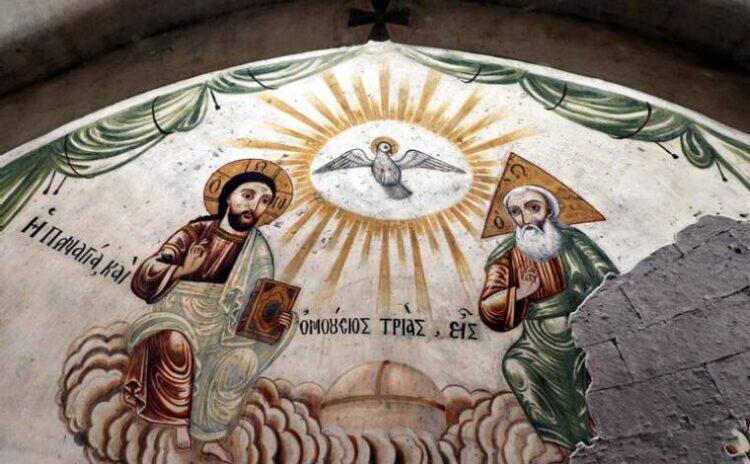
Inscriptions belonging to Christian Turks were found in the 188-year-old Greek Orthodox Church
During the restoration and conservation works that began 1.5 years ago in the 188-year-old Saint Eustathios Greek Orthodox Church in the İncesu district of Kayseri, inscriptions belonging to Christian Turks were discovered.
After the departure of Greeks from İncesu after the year 1924, the Saint Eustathios Greek Orthodox Church, which passed to the municipality, was used as a theater hall, art school, and a storage for military archives at one point.
Kayseri Metropolitan Municipality’s Head of Urban History Promotion, Gürcan Senem, provided information about the restoration efforts of the church, which had its frescoes damaged by vandals. “Most of our wall paintings have been preserved. We can see from the inscriptions underneath the wall paintings that Christian Turks were particularly active sponsors here. They have inscribed their benefactions in Karaman Turkish,” said Senem.
Senem, stating that the wall paintings in the church have been preserved, mentioned, “We are fortunate that most of the wall paintings have been preserved. A layer of sediment has formed here, which is why the frescoes were not perceived. This has contributed to their preservation. In our conservation efforts, we removed this sediment layer and revealed the wall paintings underneath, which are mostly well-preserved. A specialized team of about 15 experts worked on the conservation. They are currently continuing their work. Conservation or restoration efforts not only bring out the original identity of the structure but also contribute to its art historical dating. In this sense, we attach great importance to the work we are doing.”

Christian Turks wrote their blessings in Karaman Turkish
Providing information about the historical background of the structure, Senem stated, “On the exterior of the building, there was an Ottoman Turkish date of 1835 inscribed on the rock. They were dating the building based on that date. During our conservation work, we also found a building inscription from 1835 in the apse area of the structure. This was extremely important in revealing the history of the building. Additionally, the building was a Greek Orthodox church. In fact, we see from the inscriptions under the wall paintings that Christian Turks were particularly active sponsors here. They inscribed their benefactions in Karaman Turkish. There were also conflicting opinions about the building. It was mainly referred to as the Church of Saint Eustathios. However, in some sources, it was also mentioned as the Church of Saint Demetrius. Through our conservation efforts, it became clear that it is the Church of Saint Eustathios, as frescoes associated with ‘Saint’ were also found. In this regard, the conservation work conducted to reveal the identity of the building was of great importance. Furthermore, a section of the building known as the ‘narthex’ had been completely destroyed. Currently, during the restoration process, the narthex section, especially at the entrance, is being reconstructed.”
After restoration, the Aziz Eustathios Greek Orthodox Church will become a museum.
Cover Photo Samed Aydın Sun/DHA
You may also like
- A 1700-year-old statue of Pan unearthed during the excavations at Polyeuktos in İstanbul
- The granary was found in the ancient city of Sebaste, founded by the first Roman emperor Augustus
- Donalar Kale Kapı Rock Tomb or Donalar Rock Tomb
- Theater emerges as works continue in ancient city of Perinthos
- Urartian King Argishti’s bronze shield revealed the name of an unknown country
- The religious center of Lycia, the ancient city of Letoon
- Who were the Luwians?
- A new study brings a fresh perspective on the Anatolian origin of the Indo-European languages
- Perhaps the oldest thermal treatment center in the world, which has been in continuous use for 2000 years -Basilica Therma Roman Bath or King’s Daughter-
- The largest synagogue of the ancient world, located in the ancient city of Sardis, is being restored











Leave a Reply